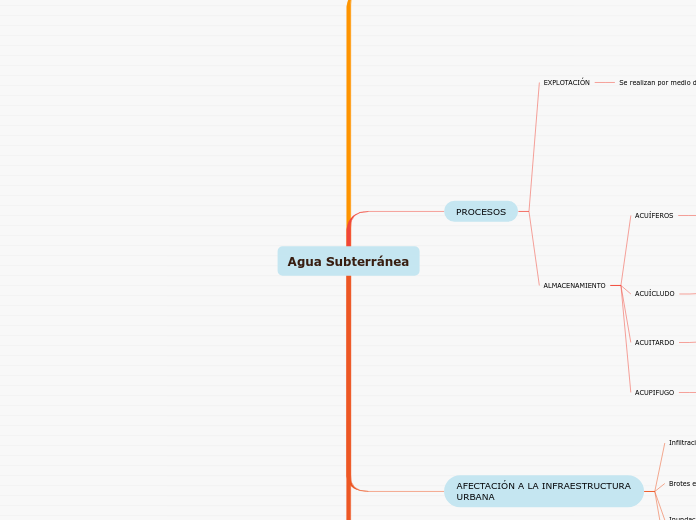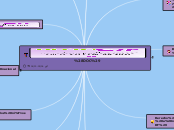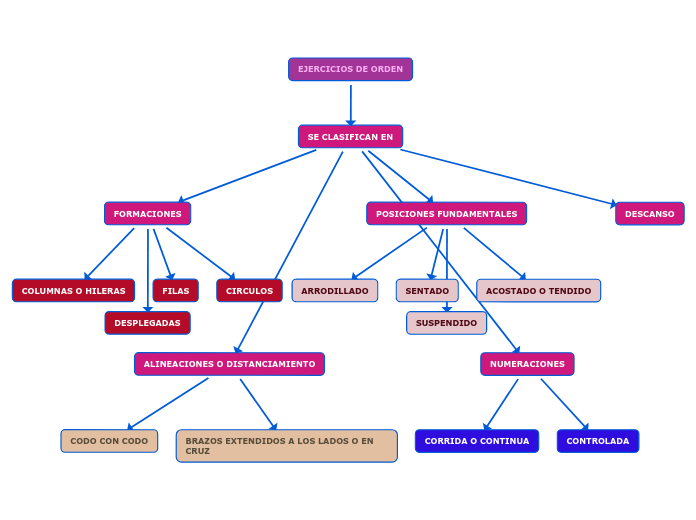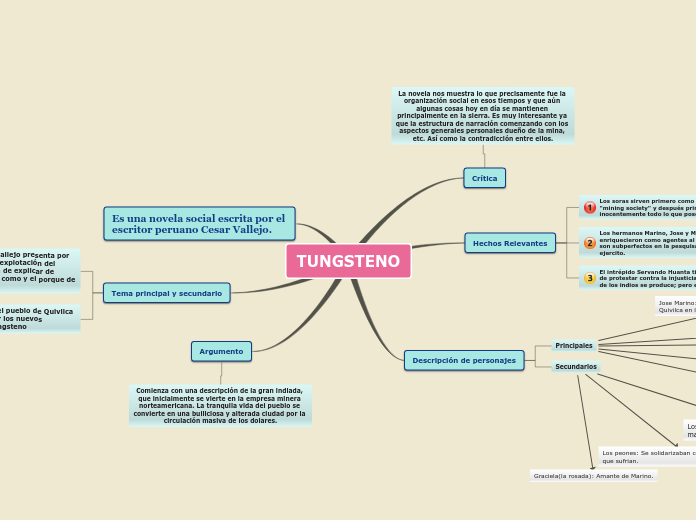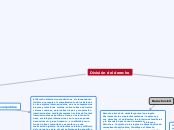Agua Subterránea
To name your story, you have to think about the overall message and what you want your audience to understand from the story. Also, make it relevant and easy to remember.
SOLUCIÓN
The ending of a story is essential. We all know that if the ending is weak, what happened before loses its importance. So make it unpredictable, but fair. A resolved ending answers all the questions and ties up any loose threads from the plot.
INGENIERÍA DE MATERIALES
Ayuda para saber como se comportan los materiales de construcción con la precipitación en todos sus estados y así tener menos problemas.
VÍAS TERRESTRES
El buen diseño para evitar inundaciones, incluyendo el agua del subsuelo.
GEOMECÁNICA
Para realizar estudios del suelo.
AMBIENTAL
This is the closure section of the story.
See examples of possible outcomes below:
- all problems have been solved
- it's clear how each one of your characters ends up
- your main character is transformed by the challenge
Ayuda en la implementación de las normas existentes para tener un entorno amigable y aprovechar al máximo el agua que cae de la precipitación.
Try answering these questions to come up with a closure:
- Have all the problems been solved?
- Is there a clear picture of what happens with each character in the story?
- Has the challenge transformed your main character?
- How do the characters feel in the end?
HIDROLOGÍA
This is the moment when the main character surpasses the last obstacle and finally faces their greatest challenge.
The climax usually follows one of these patterns:
- realization
- resolution
- choice
Type in your answer.
Es muy útil para el análisis de cuencas hidrológicas por medio de la tecnología y programas, tales como HEC-RAS y HEC-HMS que nos facilita saber junto con la hidráulica como se comporta la precipitación sobre la superficie terrestre.
AFECTACIÓN A LA INFRAESTRUCTURA URBANA
The middle of the story is where you add layers of complications that will lead to the end. Reveal more about the character's journey. Did their personality go through changes? How did they overcome the challenges? And as you build up the story’s central conflict, make it more personal to that character. Also, from the middle act, you have to lead into the final act.
Infiltración en colectores de drenaje pluvial
Una vez que se llena el drenaje, se comienzan a inundar las calles.
Inundación de sótanos de edificios
There wouldn't be any tension and excitement in your story if there weren't any obstacles in your character's way.
Debido a que el suelo no es permeable, el agua que baja después de una precipitación, por lo general, se queda estancada, se saca con un sistema de bombeo.
A story is nothing more than a character overcoming a series of difficulties to reach the desired goal. Obstacles usually create suspense and conflict. In overcoming obstacles, there is growth: weak becomes strong; hatred turns into love; sadness into happiness; wrong into right; lies into truth; or evil becomes good.
See a few examples below:
- stopping a meteor
- finding a killer
- finding love
Brotes en casas habitación
Your character(s) need(s) motivation in order to solve the challenge(s).
El agua puede llegar a entrar por los contactos o grietas existentes en la casa-habitación, debido al agua que se infiltra al suelo; por lo general, sucede en sótanos.
Why does your character need to confront this challenge? What does he/she expect to accomplish by solving it?
See a few examples:
- will marry in 3 days
- can fix the mistakes of the past
Infiltraciones en túneles
Each story has a main character and that character usually needs to solve a problem or challenge. The character's challenge is the one that creates tension throughout the story.
En los túneles existen infiltraciones de la tierra que se encuentra sobre él durante varios días debido a la infiltración que existe en éste después de las precipitaciones de lluvia, como es el caso del túnel de la Loma Larga en San Pedro.
In most stories, there are 3 challenges. The number 3 is a mystical number symbolizing completeness. Try to come up with interesting challenges with which your character needs to struggle.
See a few examples below:
- turns into a werewolf at night
- is sent back in time
PROCESOS
In the beginning of the story (or the exposition), you will need to introduce the setting and characters. You might also want to introduce the main conflict. This part of the story is important because it gives the reader necessary background information and maybe even a first insight into a character’s personality.
ALMACENAMIENTO
The setting (time & place) of a story can change throughout the plot.
ACUPIFUGO
Sensory details include sight, sound, touch, smell, and taste. These details are important because they create depth in your setting.
See a few examples below:
- the smell of fresh bread
- the scent of freshly cut grass
- rain falling onto the windshield etc.
Se refiere a aquellas formaciones geológicas que no contienen agua ni la pueden transmitir.
Por ejemplo
Unas rocas metamórficas sin apenas meteorización ni fracturación.
Un macizo granítico que no esté fisurado.
ACUITARDO
The weather is an important element in your story because it can highly influence the ambiance and the mood of the characters.
Formaciones geológicas que, conteniendo apreciables
cantidades de agua la transmiten muy lentamente, por lo que no son aptos para el emplazamiento de captaciones de aguas subterráneas, sin embargo, bajo condiciones especiales permiten una recarga vertical de otros acuíferos.
Does your story include catastrophic weather? See a few suggestions below or add your own:
- hurricane, earthquake, storm, etc
ACUÍCLUDO
The time of the story can also change. It can describe the event of a single day or can include an entire year's plot. Anyway, don't forget to mention it.
Aquella formación geológica que, conteniendo agua
en su interior incluso hasta la saturación, no la
transmite y, por lo tanto, no es posible su
explotación.
por ejemplo
depósitos de arcillas
ACUÍFEROS
Your story can take place wherever your imagination will take you to.
For example: in an elevator, in an enchanted forest, etc. Don't forget to give details of the environment each time the setting changes, otherwise, the story can be confusing. Also, mention the seasons as each of them has unique weather and events.
Es aquel estrato o formación geológica que permite
la circulación del agua por sus poros y/o grietas.
Confinados
En este caso, la roca permeable queda confinada
por encima y por debajo en terrenos impermeables.
Todo el espesor del acuífero está saturado de agua y la presión de agua en los poros o fisuras es mayor que la atmosférica.
Semi-confinados
En este una de las rocas no es totalmente
impermeable y permite cierta transmisión de agua
a través de ella.
Libres
En estos acuíferos existe una zona impermeable que
sirve de base a una zona permeable saturada de agua.
EXPLOTACIÓN
Characters are essential to a good story. Usually, the protagonist(s) is/are the most affected by the plot. Introduce a character by focusing on their actions, interests, and occupation, as the physical appearance doesn't make a difference in most cases.
Se realizan por medio de pozos y bombeo
Type in the name of your character.
Tipos
Add other properties of the character.
Rotopercusión
Se realiza mediante la fragmentación de la roca a través de impactos producidos por un martillo que se transmite a la herramienta perforadora, la misma que está en contacto con la roca, el movimiento de rotación se produce cuando percute a fin de repartir el impacto en toda la superficie del fondo.
Perforación rotatoria
Este consiste en perforar un pozo mediante la acción rotatoria de una barrena y remover los fragmentos que se producen con un fluido que continuamente se hace circular conforme la barrena penetra en los materiales de la formación del suelo.
Perforación por percusión
Se basa en el golpeteo continuo de una pesada herramienta de corte, elevada mediante un cable de acero, dejándose caer sobre el suelo; lo cual deriva en una fragmentación del mismo. Por consiguiente, este sistema está pensado para la realización de sondeo verticales.
¿QUÉ ES?
Representa una fracción importante de la masa de agua presente en los continentes, bajo la superficie de la Tierra, tanto en el suelo como en el subsuelo.
